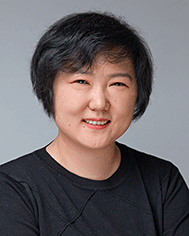Nanoscale Horizons Emerging Investigator Series: Dr Ran Long, University of Science and Technology of China, China
Abstract
Our Emerging Investigator Series features exceptional work by early-career nanoscience and nanotechnology researchers. Read Ran Long’s Emerging Investigator Series article ‘Cu and Si co-doping on TiO2 nanosheets to modulate reactive oxygen species for efficient photocatalytic methane conversion’ (https://doi.org/10.1039/D2NH00457G) and read more about her in the interview below.
Dr Ran Long received her BS in Chemistry in 2009, and her PhD in inorganic chemistry under the tutelage of Professor Yujie Xiong in 2014, both from the University of Science and Technology of China. Her research interests focus on controlled synthesis and catalytic applications of metal nanocrystals.
Read Ran Long's Emerging Investigator Series article ‘Cu and Si co-doping on TiO 2 nanosheets to modulate reactive oxygen species for efficient photocatalytic methane conversion’ ( https://doi.org/10.1039/D2NH00457G ) and read more about her in the interview below:
NH: Your recent Nanoscale Horizons Communication describes the synthesis and application of ultrathin Cu and Si co-doped TiO 2 nanosheet catalysts for photocatalytic methane conversion to ethane. How has your research evolved from your first article to this most recent article and where do you see your research going in future?
RL: My first publication dates back to 2012 when I was a second-year PhD student, focusing on metal–insulator transitions for their enormous energy saving potential. Ever since my PhD studies, I have been fascinated by catalytic conversion of carbon dioxide. Over the years, my research has evolved from carbon dioxide to the construction of artificial carbon cycle reaction networks.
The future of my research will still focus on catalytic sites for the controllable activation and targeted transformation of small molecules. The fundamental knowledge gained here is intended to help the rational design of materials, by studying the interaction mechanism between small molecules and catalytic sites and providing new strategies for the construction of efficient, highly selective, and highly economical artificial carbon cycle reaction networks.
NH: How do you feel about Nanoscale Horizons as a place to publish research on this topic?
RL: The broad scope of Nanoscale Horizons bridges various disciplines including the reconstruction of energy systems and the establishment of an artificial carbon cycle. It is the most effective medium for sharing new concepts for early-career nanoscience and nanotechnology researchers.
NH: What aspect of your work are you most excited about at the moment?
RL: The interaction mechanism between plasmons and small molecules.
NH: In your opinion, what are the most important questions to be asked/answered in this field of research?
RL: Can the plasmon effect establish new bond selection rules in chemical reactions?
NH: What do you find most challenging about your research?
RL: Plasmons in chemistry generally include complex problems related to the optical, thermal, and chemical synergistic effects. As a result, the design of an experimental plan is often difficult.
NH: In which upcoming conferences or events may our readers meet you?
RL: I will be attending the second national academic conference on carbon dioxide resource utilization of the Chinese Chemical Society.
NH: How do you spend your spare time?
RL: I like to spend time with my family and friends.
NH: Can you share one piece of career-related advice or wisdom with other early career scientists?
RL: Bad results in scientific research are not a waste of time, but part of the process of gaining experience and depth of thinking.
| This journal is © The Royal Society of Chemistry 2023 |

